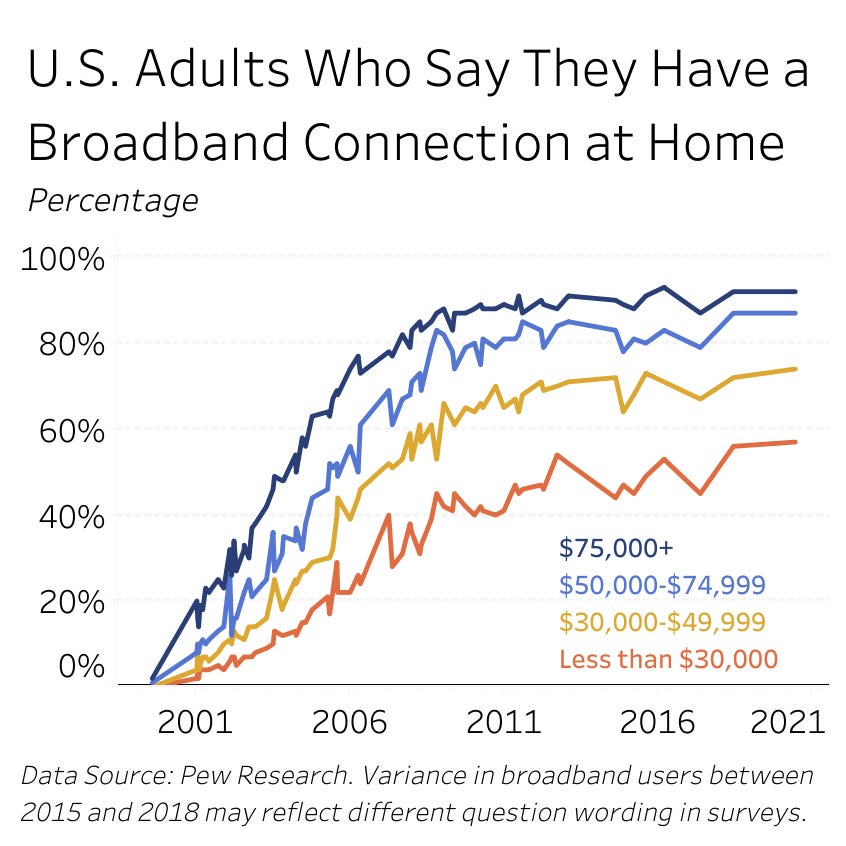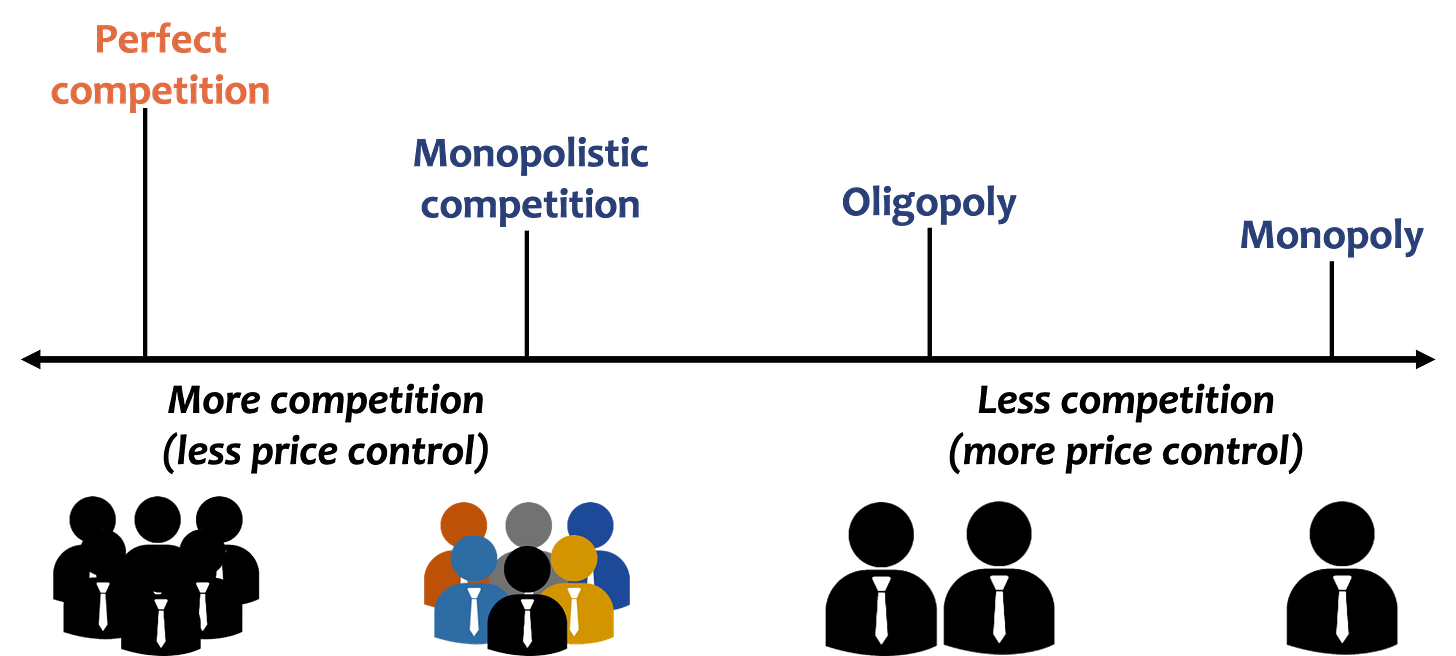The Government’s Role in Expanding Broadband Access
This morning the White House announced that 20 major internet service providers have committed to lowering the cost of internet access for low-income households who qualify for the federal subsidy of up to $30 per month (of $75 per month for tribal households). The initial subsidy was part of the Affordable Connectivity Program (ACP) established under the bipartisan infrastructure bill. To qualify for the subsidy, a household member must meet certain income thresholds or participate in one of the nation’s assistance programs like the Supplemental Nutrition Assistance Program (SNAP), Medicaid, Pell Grants, or many others. An estimated 11.5 million households have already signed up.
This subsidy program has been in place since the start of 2022, but the latest announcement is about a coalition of private companies who have agreed to offer ACP-eligible households a high-speed internet plan that costs no more than $30 per month. This move would essentially allow low-income households to receive high-speed internet at no charge instead of just at a reduced rate after the subsidy was applied. The companies included in the announcement collectively cover about 80% of the U.S. population and nearly 50% of the rural population.
The internet’s main function is to reduce the cost of transmitting information from one party to another. While this may seem like an oversimplification of the internet’s importance, it’s pivotal in improving market efficiency. The foundational market structure in economics, the perfectly competitive market, rests on a number of assumptions, but two important ones include complete knowledge and zero transaction costs. The internet helps markets move toward perfect competition by enhancing information availability and decreasing the cost of transactions.
The value of this information, however, relies on a concept known as network effects. As more users join the network, the product becomes more valuable. A website like Yelp! is more beneficial when there are thousands of users leaving reviews rather than ten users. The internet, broadly, works in a similar manner. The more people online, the more valuable the connections. This is part of the reason broadband support was included in the infrastructure bill. As more people get online, it improves their ability to apply for jobs, complete online courses, and pay taxes.
The importance of being online is one argument in favor of municipal wireless networks operated, particularly in rural areas where private companies have been reluctant to invest in the infrastructure necessary to offer high-speed access. Instead, private companies focus on more heavily populated areas or wealthier neighborhoods. In more rural ares, there may only be a single provider of internet services, which creates a localized monopoly. It could be beneficial to smaller population areas to allow a single company service to the entire region instead of multiple providers splitting the market. This argument places internet service along the same lines as the postal service. Just as private companies like UPS and FedEx aren’t willing to deliver packages to rural America, many internet providers are hesitant to invest in rural areas.

Natural monopolies are often handled in one of two ways: regulation or government ownership. For some services, like mail delivery and rail service, the United States has opted for public ownership. The US Postal Service is the sole provider of first-class mail delivery in the United States while Amtrak is a quasi-public corporation responsible for passenger rail routes in the United States. Interestingly enough, both mail delivery and rail connections are also examples of services that exhibit network effects. A number of US cities already offer municipal wireless networks already, but most offer wireless access in public areas.
The other option for dealing with natural monopolies is through price regulation. This is the method the United States uses when regulating utility companies providing electricity, water, and sewage. Under this approach, governments set price caps to determine the maximum price that companies can charge for their product. While price regulation doesn’t address the availability problem caused by monopoly providers, it does impact the pricing power of monopolies. Internet providers are also very similar to other utility companies in how they’re structured, but internet prices aren’t currently regulated in the United States, and the FCC chair does not support regulation.
The federal poverty guideline for a family of four in the Contiguous US is $26,500 [U.S. Department of Health and Human Services]
About 77% of U.S. adults say they have a broadband connection at home [Pew Research Center]
The United States ranks #11 in average internet speed while South Korea tops the list [Trading Economics]
The largest broadband providers, based on the percentage of the US population covered, were AT&T (41.4%), Comcast (36.1%), and Charter (33.4%) [Fierce Telecom]
Comcast earned $14.1 billion in profit during the 2021 fiscal year [Comcast]





